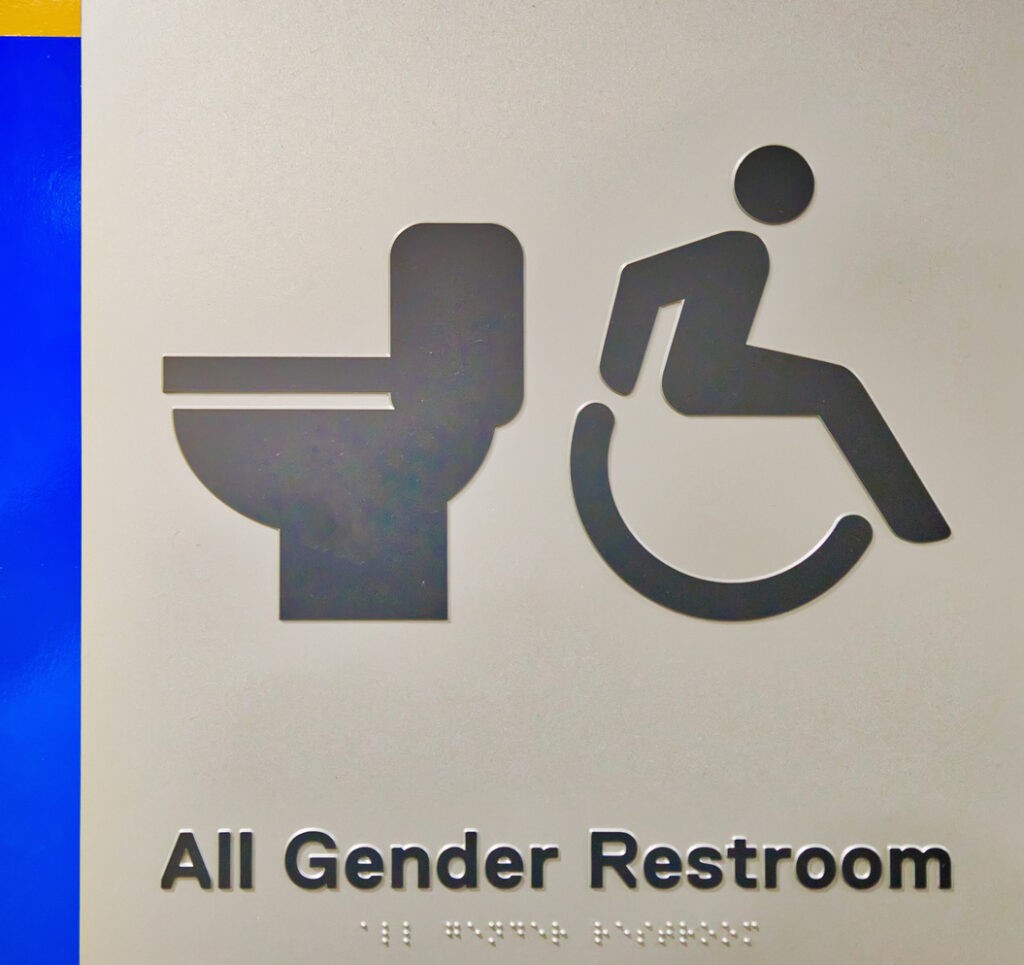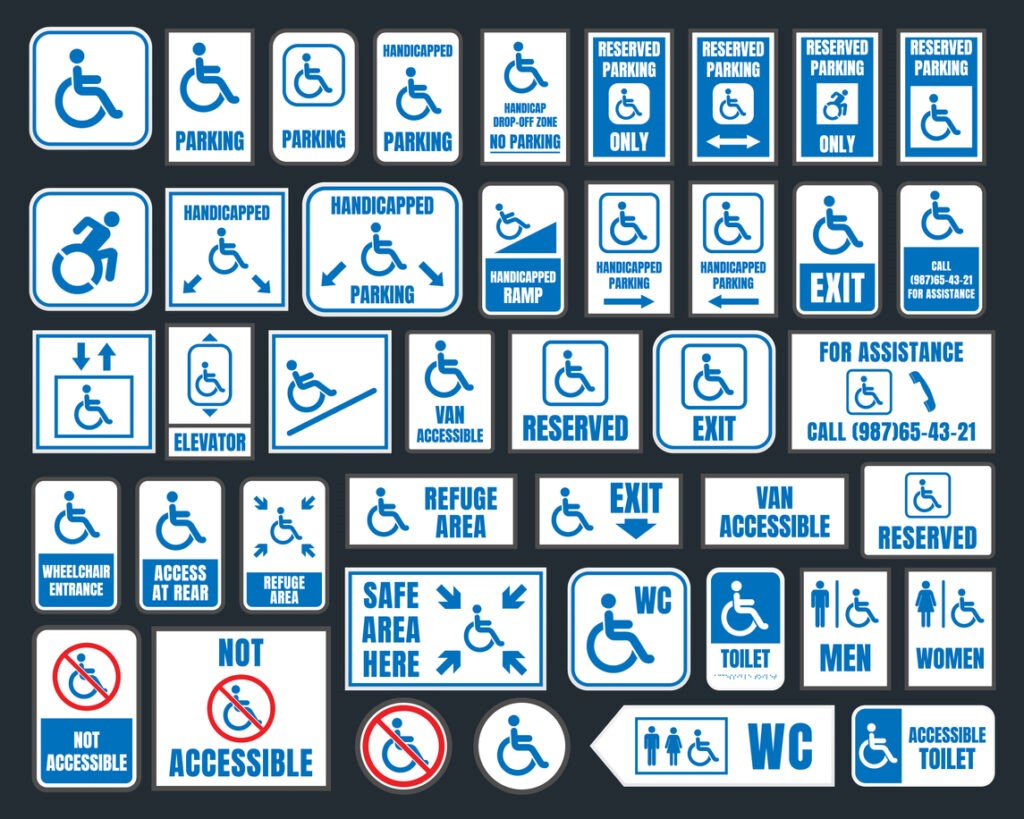ADA compliant signage provides universal access for a diverse group of visitors regardless of their physical abilities or cultural backgrounds. The signage should be easily understood and provide accessibility to all.
The Americans with Disabilities Act (ADA) denotes disability rights as civil rights. The ADA protects disabled persons in many areas of public life. Part of the ADA requirements require signage that conforms to the ADA Standards for Accessibility.
ADA signage is used for directional purposes for locations such as emergency exits, restroom signs, elevators or any permanent space. These spaces could include classrooms, medical or permanent office space or conference rooms.
Where are ADA Compliance Signs Required?
ADA signage is required for certain facilities such as institutes, businesses or municipal buildings. People with disabilities need these signs to navigate around a building. Interior ADA signs are required at every doorway all public buildings. This includes office, business and apartment buildings. As well as those home businesses with visiting clients or employees.
In addition to doorways, ADA signage is sometimes required at other interior and exterior building locations. The lettering and sign specifications requirements will vary depending on the situation, you can find all accessibility standards details here.
What are ADA Standards for Accessibility Design?
The Department of Justice assembled online 2 online versions of the 2010 revised ADA regulations. These help provide accessibility guidelines for those required to accommodate the Standards for Accessibility (SAD). The ADA compliant signage regulations may include Braille dots, raised characters (known as tactile characters), visual characters and/or pictograms.
How to Provide Optimal Visibility?
These ADA signs should have high contrast, such as dark characters on a light background or vice versa. Most ADA standards require raised characters and be in a san serif font that can be easily read. In addition, there is a required character height and spacing guideline that should be followed.

Why do a Combination of Braille Sign and Tactile Signs?
Tactile signage has raised characters so that the sign can be read through touch. This will provide access to someone who is blind or has poor vision and unable to read Braille dots. In situations where both Braille and tactile signs are required, the Braille should be underneath the last line of text. In addition, it should be separated by lines.
What are Pictograms?
Pictograms are typically the International Symbol for Accessibility (ISA). These are easily recognizable designations for wheelchair accessible restrooms, stairs, elevator, parking and more.

What are the Directional or Informational Sign Requirements?
The minimum ADA regulations apply to most directional or information signage. Often you can simply use arrows in these cases. However, there can be exceptions.
Architectural Signs can refer to signs in a public or private space to communicate certain messages. Many of these message pertain to identifying features like directions to the stairs or bathrooms, floor layouts and emergency exits.
Architectural Signs must be ADA compliant with braille and tactile elements. A professional sign company has the technology to create the proper type of ADA Signage. They should take into consideration the font, color, sizing and placement. This is very important because government regulations on the signage throughout public and private organizations need to be adhered to.
HES Sign can help you evaluate your exact ADA signage needs. We can design and fabricate your ADA signs to exact specifications. As well as properly install it.
We can handle ADA signage needs. Message us today.
Are you looking to find out how digital signage can help your business? Please get in touch with Delaware and the Tristate area’s premier sign company. HES Signs mission is to provide our customers with signs and services of the highest quality and the greatest possible value. We have the sign portfolio to prove it!

